Can we talk about bowlers’ run-ups? We’ve picked out three great ones. They’re not necessarily our favourites, but we feel like each one says something in particular about how bowlers get to the crease and what we as viewers feel as they’re doing so. But before that, please can we talk about Jurassic Park for a bit, because that’s the best way of explaining why run-ups are important.
There is a reason why the first Jurassic Park is good and why all the rest of the Jurassic Park films are not so good. You can only have a fantastical world of dinosaurs revealed to you once.
With that in mind, let’s compare the original film with Jurassic World: Fallen Kingdom, which is, at the time of writing, the latest.
The slow build

Tell you what you don’t see for ages in the first Jurassic Park? A scary dinosaur. Not properly anyway.
In the opening scene, you see people reacting to a dinosaur and you sometimes see things from the dinosaur’s perspective. You see someone being killed by what you presume is a dinosaur and you see a dinosaur’s eye. But you don’t get a nice clear look at a scary dinosaur.
Steven Spielberg keeps his powder dry. After that scene, we slowly meet our human characters before being introduced to the concept of the park and how it works. We see a few dinosaurs towards the end of this bit and it is a big moment – but we only see herbivores.
At the start of their park tour, the visitors go to the Velociraptor enclosure. Guess what we don’t see at the Velociraptor enclosure? That’s right, a Velociraptor. We see a cow being lowered into the pen. We see trees rustling and we hear the cow being killed, but we don’t actually see a thing.
The rest of the tour is a big damp squib until Dennis Nedry switches off the power in the middle of a thunderstorm. This is when we finally get to see a scary dinosaur and even then it’s drip-fed to us to increase the suspense.
First we get the water vibrating in the cup – a moment that is genuinely more terrifying than anything that happens in any of the subsequent films.

“Do you feel that?”
After that, we see a missing goat. Then we see a claw on a conspicuously unelectrified fence.
Then we see a Tyrannosaurus’s head. Shortly afterwards, it attacks.
So it’s only about an hour into the best dinosaur film ever made that you finally get to see a scary dinosaur.
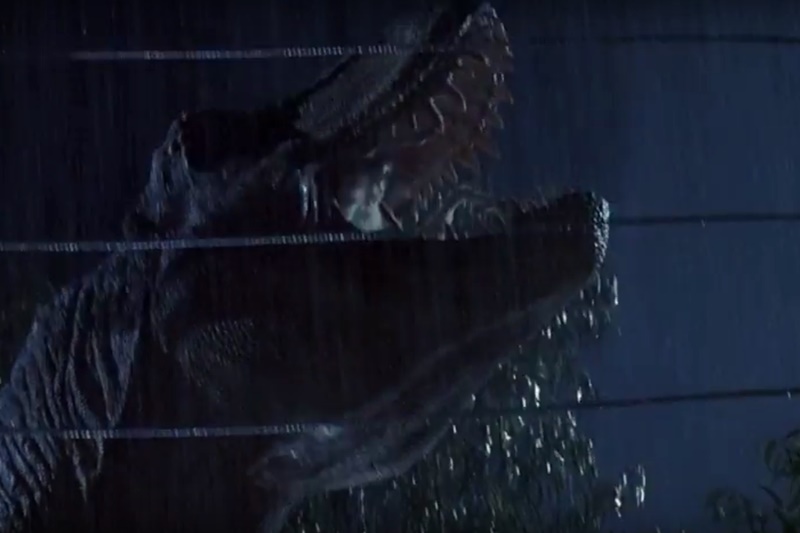
Contrast that with the opening scene of Jurassic World: Fallen Kingdom, which is a veritable masterpiece of premature bolt-shooting.
As a measure of how stupid this film is, it opens with a team who are trying to collect DNA from the Indominus Rex carcass at the bottom of the park’s lagoon. The Indominus Rex is a made-up hybrid dinosaur which combines Tyrannosaurus Rex, Velociraptor and Gigantosaurus, among others. We put it to you that if you can’t make dinosaurs scary without making up a new, fictional dinosaur, you have no business making dinosaur films.
After just a few seconds, we see a silhouette of a big scary underwater dinosaur.
Just after the one-minute mark, we see a big scary terrestrial dinosaur.
At 1m20s we see the Tyrannosaurus roar and attack.
At 2m40s a gargantuan Mosasaurus leaps from the water and ingests a lad dangling on a rope ladder that is trailing from a helicopter.

What follows is another two hours of much the same thing interspersed with scenes where far less is happening.
Jurassic World: Fallen Kingdom is a woeful film.
This stark difference between Jurassic Park and Jurassic World: Fallen Kingdom tells us something. It tells us that anticipation is important. Anticipation can, in fact, be quite a big part of the fun.
The bowler runs in…
Nothing happens in cricket until the bowler releases the ball. In many ways, until that ball is released, cricket isn’t actually taking place.
It’s a cue, though, isn’t it? It’s the cue in fact. When the bowler runs in, it’s time to pay attention.
So while the run-up is not actually a meaningful thing in terms of the scoreboard, this ostensibly mundane lead-up to cricket-actually-taking-place is very important. It’s a little crescendo.
The bowler’s run-up is when tension mounts. While usually not a tremendous amount happens, the fact is every big, dramatic, unforgettable cricket moment was preceded by someone running in to bowl.
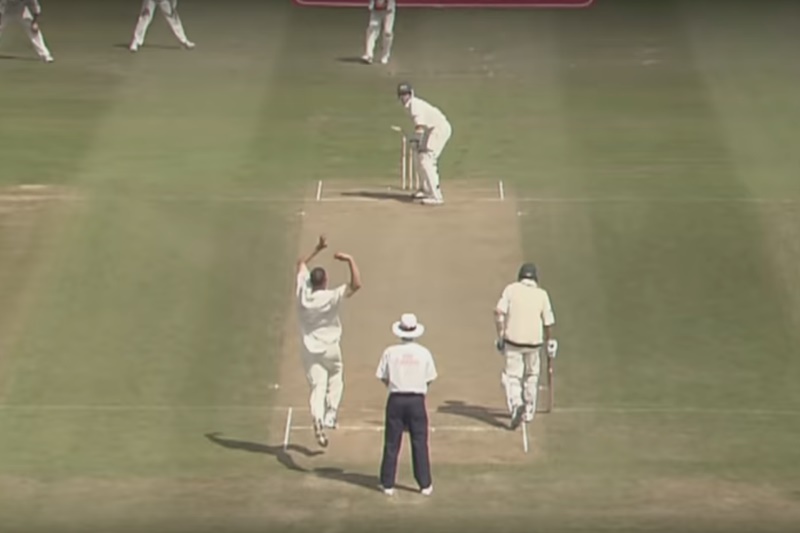
As fans, we appreciate this fact on an unconscious, fundamental level and so, whether we know it or not, we build relationships with different bowlers’ run-ups.
Because they’re all different, aren’t they? Even in these days of scientific coaching, every bowler approaches the crease in a slightly different way. You don’t need to look any further than the current England team for proof of this.
Think of the rhythmic-yet-controlled straight lines of Jofra Archer’s approach. Archer moves like a silken robot, whereas his fellow fast bowler Mark Wood hustles in with bandy-armed urgency. Even without his old triple-jumper backward-step-and-push at the start, Wood’s run-up is distinct.
Stuart Broad is all elbows and high knees. Jimmy Anderson has the bit at the start where he dips his head down (presumably to look for his mark) so that it looks like he’s going to ram someone. Ben Stokes side-to-sides the ball in both hands before he properly gets going.
You can pick almost anyone and easily spot something that’s uniquely theirs to latch onto. But the truth is that some bowlers’ run-ups are more memorable than others.
Shane Warne
Run-ups are, first and foremost, for the benefit of the bowler. They are designed – or evolve – to get him or her into the right position and with the right momentum to do the actual bowling bit.
However, a secondary effect is that run-ups also have an impact on the batsman. The slow build of a very good bowler’s approach to the crease can create an almost pavlovian anxiety in the mind if you’re particularly fearful of what’s to come.
This is most obviously true for fast bowlers where there’s a real ‘calm before the storm’ vibe as they bear down on you. Michael Holding’s nickname of Whispering Death acknowledges both aspects of this rather nicely (which is just one reason why it’s a far better nickname than Stokesy or Woakesy or Rooty or Broady).
Batting is a reactive activity where conscious thought can terminally slow your movements. The long thinking time provided by a fast bowler’s run-up creates a protracted opportunity for the nervous of disposition to second-guess what’s to come and in so doing tangle their own synapses.
With their far shorter runs, spinners don’t benefit from this so much. However, Shane Warne neatly claimed the same advantage through the simple method of adding a sedate, protracted, walking prefix to his deliveries – a pre-amble, if you will.
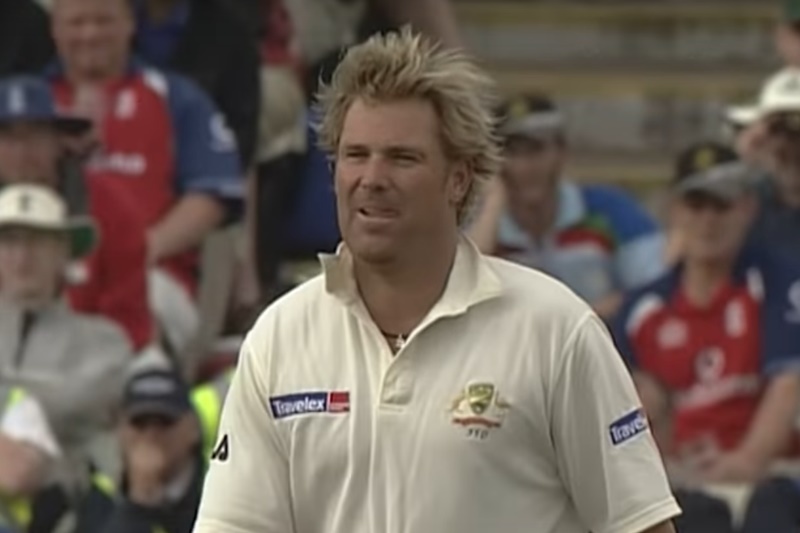
Warne would take a couple of stuttering steps to hit his mark and then he would just start walking. He had about six or seven ostensibly pointless slo-mo steps during which he failed to do anything at all.
Warne’s run-up proper – the functional bit where he actually started accelerating and bringing the ball back – was incredibly short, but it took a confusingly long time to get to that. He’d no doubt argue there was some biomechanical reason for the walking phase; that it took that many steps to ensure he was balanced and moving smoothly. We’re pretty confident it was somewhere close to 99 per cent bluff, bluster and theatricality though.
Even as a fan, there were times we felt physically sick with nervousness while watching Warne bowl. Those half dozen steps were a big part of that because waiting for something to happen is a major contributor to the tension that makes cricket so great.
Imagine it’s a big moment. A wicket now would be the kiss of death for your team. The opposition captain brings the fielders in. He takes a while about it. He tweaks. He fine-tunes. The batsman waits. The bowler stands at the end of his mark, spinning himself catches. Finally everyone’s ready and the batsman takes his guard. Something’s about to happen. You brace yourself. You feel fidgety.
The bowler begins his run up. At a slow, even pace, he starts to walk. Your heart-rate climbs.
This is how cricket can hit you so hard.
Shoaib Akhtar
At the opposite end of the spectrum, there is the run-up that terrifies because of its obvious physical wildness. Wasim Akram and Waqar Younis were our favourite fast bowlers, but when it comes to run-ups, neither can really match their quite ludicrous successor in the Pakistan side, Shoaib Akhtar.
Everyone has their favourite fast bowler run-up. If you like someone else’s more than Shoaib’s then great, good on you. We’re not here to argue with you. But surely we can at least agree that his was a very good one.
Because it ticks so many boxes, doesn’t it? It’s almost an archetype.
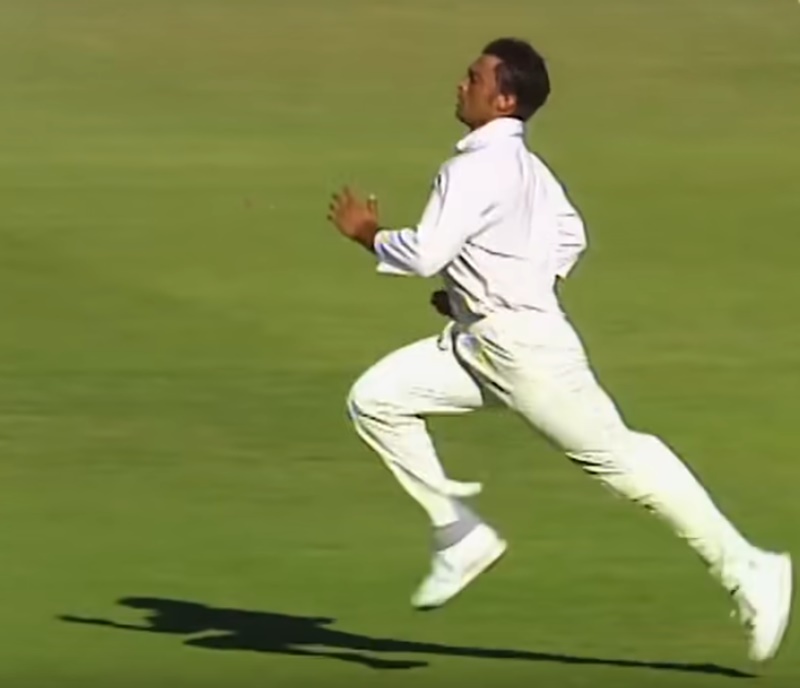
Think of when you first learned to bowl. You almost certainly tried to bowl as quickly as you could and in your efforts to do so, you no doubt ran in from comically far away.
Most of us ditch the fast bowling when we realise we aren’t that quick and even those of us who persist with it ditch the 100-yard run-up once we’ve realised it’s counterproductive.
Shoaib Akhtar stuck with both. Shoaib’s run-up said: “I am a fast bowler. I am here to bowl fast. Brace yourself for the fastest motherfucking bowling you are ever likely to face.”
A surprisingly large proportion of fast bowlers barely run at all. There are those who jog and then sling and even the more rhythmic bowlers tend to settle on a steady tempo trot. Shoaib sprinted. He believed that to bowl quickly, you have to run quickly. So he started pretty much at the sightscreen and ran as fast as he could, his hair flapping like laundry caught on the wing of a fighter jet.
The other great thing about Shoaib’s run-up was his bandy arms. Particularly as he neared the crease, he ran with them slightly away from his body. This, combined with his baggy three-quarter length sleeves resulted in the classic feline ‘make yourself look big’ intimidation technique.
“Looks like this one’s going to be an effort ball,” thought the batsman, every single delivery.
And every single delivery he was correct.
Bob Willis
The great thing about run-ups is that as much as sports science might try and push bowlers in one direction or another, they remain idiosyncratic. There is a reason why Bob Willis’s 43-pace approach is considered one of the classics.
Mitchell Johnson said he felt (quite understandably) sheepish about going jogging in his local park with a cricket ball in his hand. Clearly Johnson didn’t do that just for the fun of it. Running with a cricket ball is not normal running. It is unbalanced and done in the constant awareness of a looming sideways twist.
So symmetry be damned!
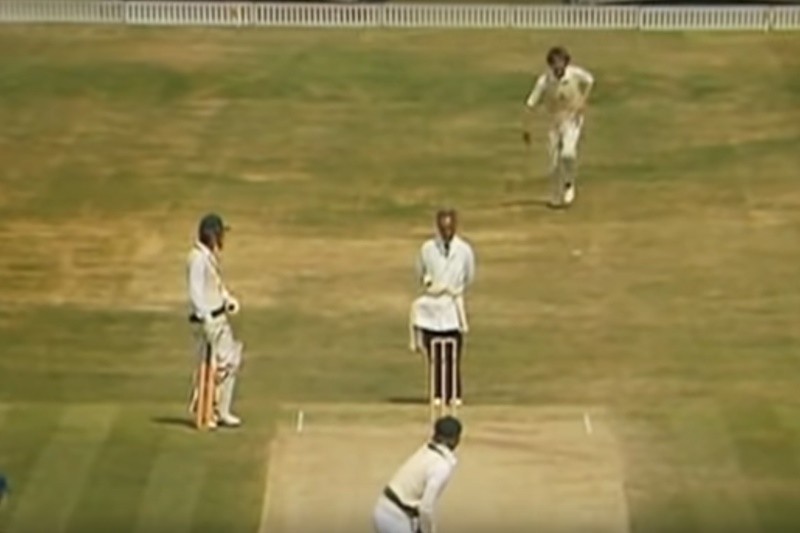
“His run-up was intimidating but slightly absurd,” concluded Wisden upon Willis’s retirement, making specific reference to a trailing right arm that pumped across his backside, “like a frenzied jockey in the home straight.”
This wonkiness combined with a comically long, curved approach to create a run-up that you’d brand ‘inimitable’ if it wasn’t for the fact that it remains among the most imitated, even today. (Russell Jackson did a good piece on curved run-ups, by the way. Apparently Alan Ross called Merv Hughes’s a “short-stepping, mincing run-up, rather as if a lobster was nipping at his ankles,” which is a very great description and also completely accurate.)
Willis’s wasn’t a run-up designed with computer software. It was one that he grew into and around. A natural, amorphous thing that could sometimes stretch or constrict, resulting in no-balls. He delivered 939 of those in Test cricket, apparently – a figure his friend Paul Allott reckoned equated to around 50 extra miles.
This one time Mike Brearley told Willis to forget about the no-balls and just bowl quickly. Willis took eight rather memorable wickets and towed that ball in behind him before every one.
If you like the offbeat features we do here on King Cricket and you’d like us to do more of them, please flip us a coin or buy us a pint each month via Patreon. The more we get, the more of this sort of stuff we can do. Cheers.
You may also want to sign up to get our articles emailed to you. (You can do that for free without becoming a patron.)

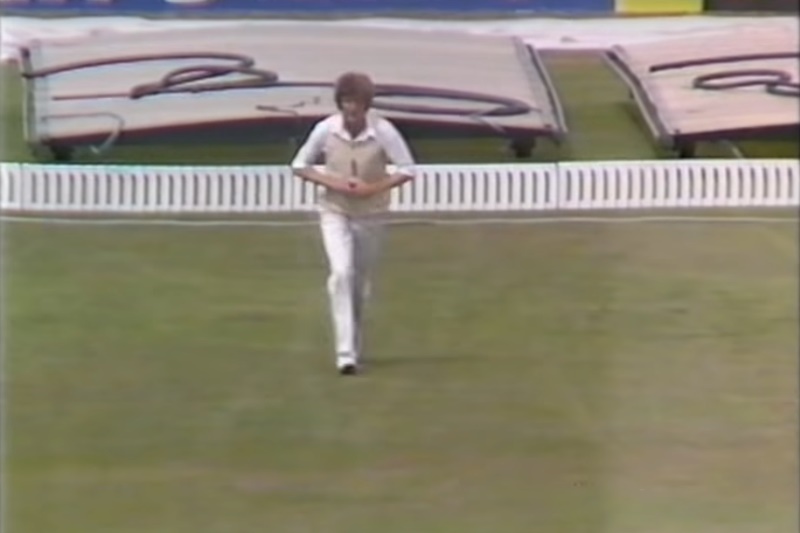

Lovely piece, KC.
My favourite run up of all time is Asif Masood.
John Arlott likened Asif’s run up to “Groucho Marx chasing a pretty waitress”.
Cricinfo describes it as “a bizarre start to his run-up in which he turned sideways to the wickets and leaned backwards before starting his approach”.
There is a Lancashire expression, “‘ere’s mi yed, mi arse is cummin”, which summarises it for me…and possibly also for Asif, who married and settled in Bury.
The following piece includes rare footage of Asif jigging his jig, plus Sarfraz Nawaz and Chris Old, other heroes of that era.
https://ianlouisharris.com/1974/09/03/back-when-i-didnt-know-my-asif-from-my-sarfraz-cricket-on-tooting-bec-common-summer-1974/
Did emulating that jig enable me and my friends to swing the ball like Asif and Sarfraz. Click through and read on to find out. **Spoiler alert** of course it bloody didn’t.
A shortcut to footage of his run-up here.
https://youtu.be/-gs4t5iKLTI?t=229
We’d actually never seen that before. Huge thanks for highlighting it. It’s exactly the kind of thing we hoped we’d uncover.
Perhaps not a top 3, but for current bowlers little beats Jaspit Bumrah for me.
The combination of the slightly ridiculous skipping run-in, and the overly straight arm action make it a doozy for me.
Maybe it’s not the best run-in. Maybe not the best action. But in combination, wonderful.
(Plus of course, as a childish Englishman, I can’t help but chuckle at his name too. Sorry Jaspit, poor form on my behalf, please feel free to also laugh at my very fishy surname)
Yes. Nice video here.
https://www.youtube.com/watch?v=lLTBH0RSTzQ
They’re uneven paces. One leg does more work than the other. It’s almost a canter.
Brings to mind something Iain O’Brien said to us once about former New Zealand dibbly-dobbler, Gavin Larsen, and his “one leg seemingly shorter than the other” run-up.
This is a wonderful piece, made more wonderful by Ged’s Asif Masood reference. Disappointingly, there don’t seem to be many modern bowlers who have a diagonal run-up.
Cheers DC.
While the curve is generally even more pleasing than a diagonal, I do like a good diagonal. Also a “stuttering” run/walk-up from a spinner can be fun too. I like the feeling of not being entirely sure whether the video just glitched. Do the batsmen wonder whether reality just glitched? It must surely throw their brains at least a hundredth of a second off rhythm.
I was always a fan of Merv Hughes and his bustling run up elbows out
That Jurassic World Youtube link sent me down a rabbit hole of videos – took me a good 20 minutes to come back here
Oh and I loved Dale Steyn’s run up
(Though I am finding it difficult to just look at the run up and not the consequences of that run up, so I may be biased)
But that’s the crux of it, isn’t it? These things become significant because of what ensues. We learn to pay attention to them.
Phil Tufnell’s run up destroyed my career as a leg spinner.
I found his skip infectious – I didn’t mean to imitate it (despite being a right-handed wrist spinner), but one summer… 1995 I reckon when he must have played a bit for England… I found myself skipping to the crease bowling long-hops and full tosses (as opposed to passable leg breaks from my previous few seasons). It’s all his fault.
Two seasons later I’m bowling ordinary medium pace that has got more ordinary as time passes. Still going mind…
Anyway, enough of my run-up angst – great piece KC. Thank you.
The question is, do you bowl medium pace with the skip? And if not, is it worth a try?
Personally I would recommend the Asif Masood sidle/jig for medium pace, ahead of the Tuffers skip.
It didn’t work for my slow moon balls – nothing did, but the sidle/jig was originally designed for medium pace.
I do hope you let us all know how you get on with it, DC, ideally in excruciating detail. A YouTube vid would be great – a TikTok one even better and I think the latter would be a first for this site.
I do not.
In my mind, I bowl medium pace with a run-up like Michael Holding. And I refuse to watch any video of me bowling. So who knows what it looks like really.
The results are usually very pleasant for batsmen, particularly a well-set batsman. I’ve been hit for sixes the size of mountains.
“Atherton said you were a good pace for practice.”
https://www.kingcricket.co.uk/the-awkwardest-squad-the-96-97-flippin-murdered-em-tour-of-zimbabwe-was-peak-90s-england-a-net-bowlers-story/2020/11/24/
Gosh, a run up that…
…”might very well look like Michael Holding – who knows – no-one’s ever been filming or watching, not even batsmen bother to look until the ball is in flight”…
…sounds incredibly impressive to me. Word on the street (albeit the Bulawayo street 25 years ago) is that your bowling is/was eminently suitable, DC. Well done.